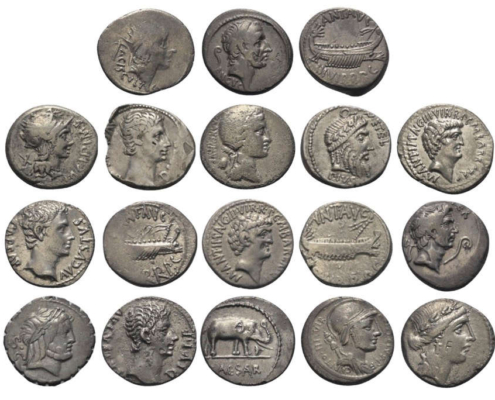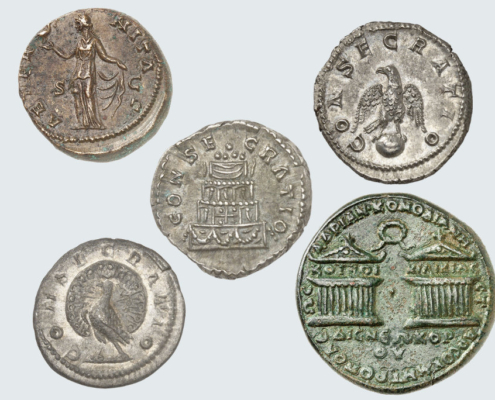1/2 Reichstaler 1621,
under Wilhelm V of Hesse-Kassel as administrator.
Condition: ef+


city of Besançon,
3 Pistols 1666 with title Charles V.
Condition: CH UNC

Bavaria, Chaise d'or (imperial shield)
1328-1347 under Emperor Louis IV.
Condition: ef

Reichstaler 1654-1668
under Count Guidobald von Thun.
Condition: vf-ef

Solidus (491-518)
under Anastasius the righteous.
Condition: vf-ef

Archive: People and Markets
Jere L. Bacharach (1938-2023)
Jere L. Bacharach, expert on Islamic numismatics, died in April 2023. The ANS remembers its long-time member of the Board of Trustees, and an invaluable scholar of the numismatic community and Middle Eastern studies.
CIT: The Last Issue in the Real Heroes Series – Astronaut
With the last issue of the Real Heroes series, CIT pays tribute to the courage of astronauts. The focus is on an iconic scene that was implemented with technical perfection as a reflection in the visor of a spacesuit.
Archive: Coins, Medals and more

The Augustean Denarius Find From Brohl-Lützing Offered at Auction
In the current auction of Solidus, the treasure find of Brohl-Lützing is on offer. The hoard of 18 denarii contains rare coinage from Pompeius to Augustus and thus takes us right into the highly exciting era of the Roman civil wars.

Oh Dear, I Think I’m Becoming a God! Numismatic Testaments to the Consecration of Roman Emperors
On 31 October 2024, Künker will auction off part 9 of the Dr. W.R. Collection. It presents Roman coins from the period between the civil war of 68/9 and the end of the Severan dynasty. The diverse material illustrates the numismatic traces of the consecration of Roman emperors.















Training Exercise for Cultural Heritage Response Unit
The German Archaeological Institute (DAI), in cooperation with the German Federal Agency for Technical Relief (THW), is building an emergency response unit to provide rapid assistance in the event of disasters around the world. In a fictious earthquake scenario, experts were recently trained in how to protect and preserve cultural heritage.
PMG Grading On-site in Munich and at MIF Maastricht in Spring 2024
Collectors and dealers will soon be able to submit banknotes to PMG again for the popular for on-site grading – either at the Munich office in April or at the PMG booth at the MIF show in May 2024. More details here.